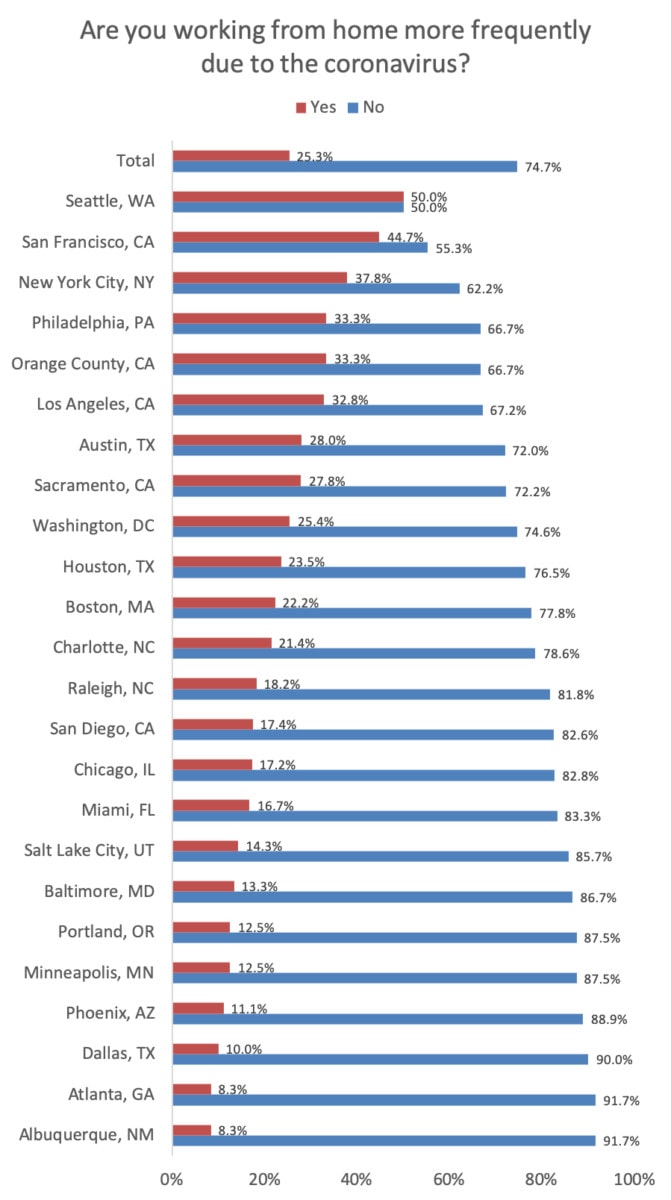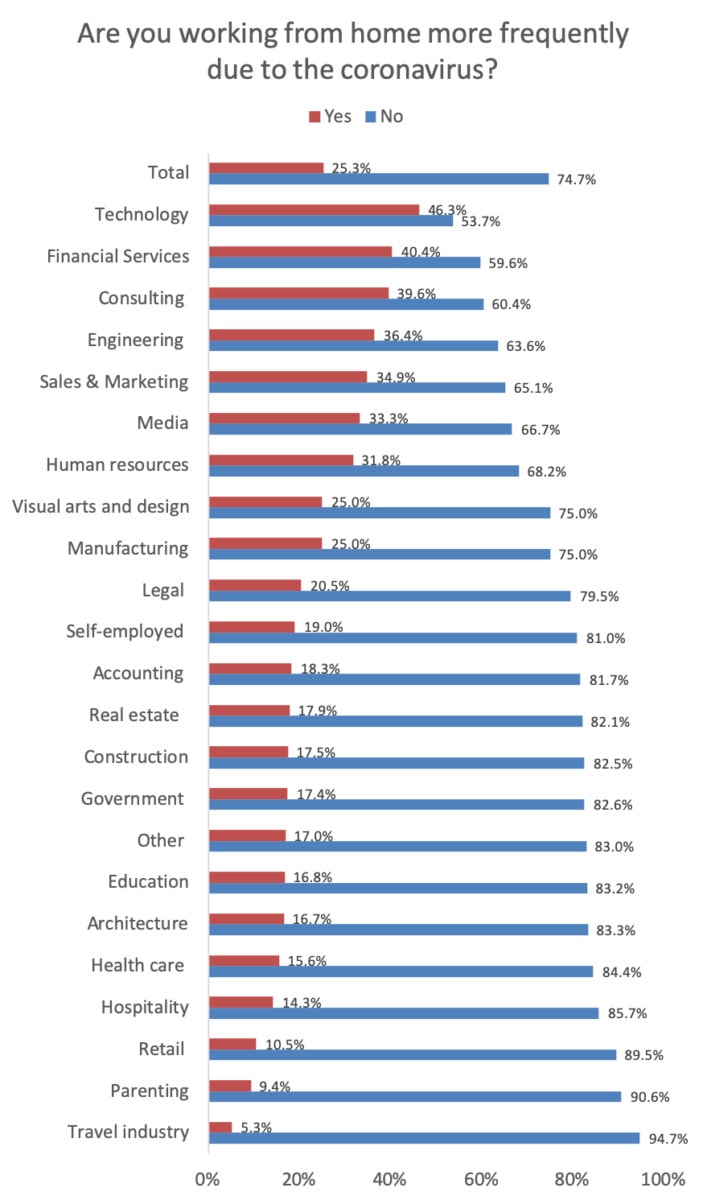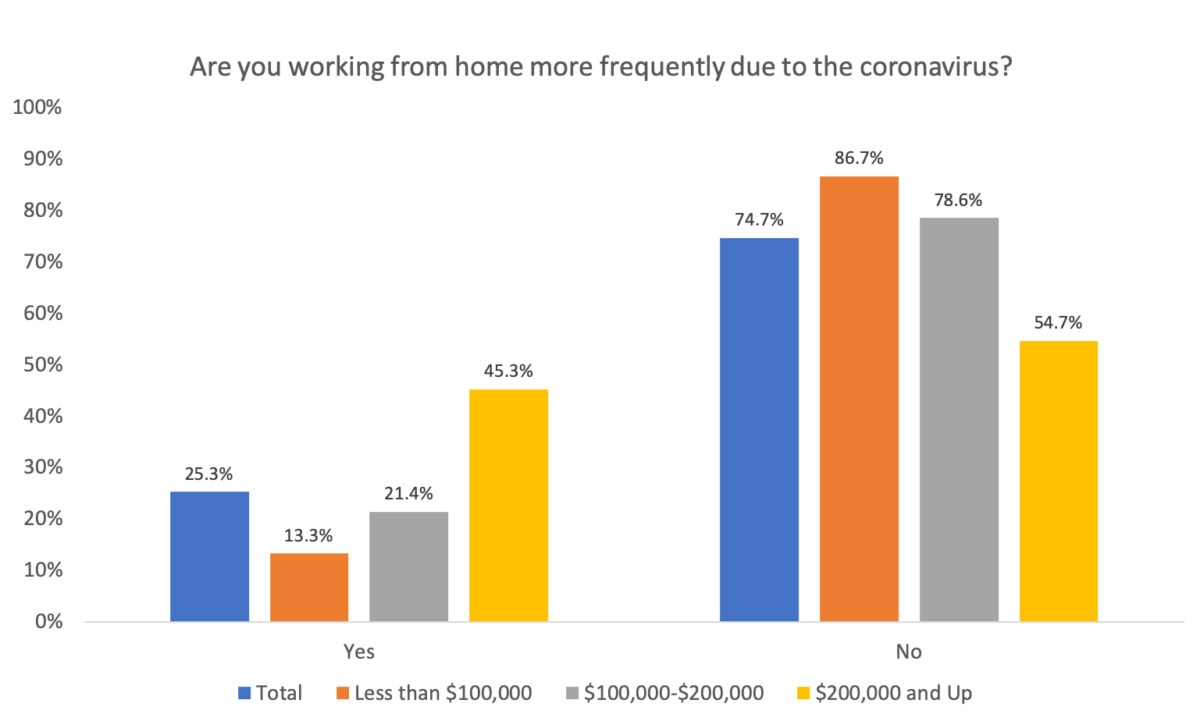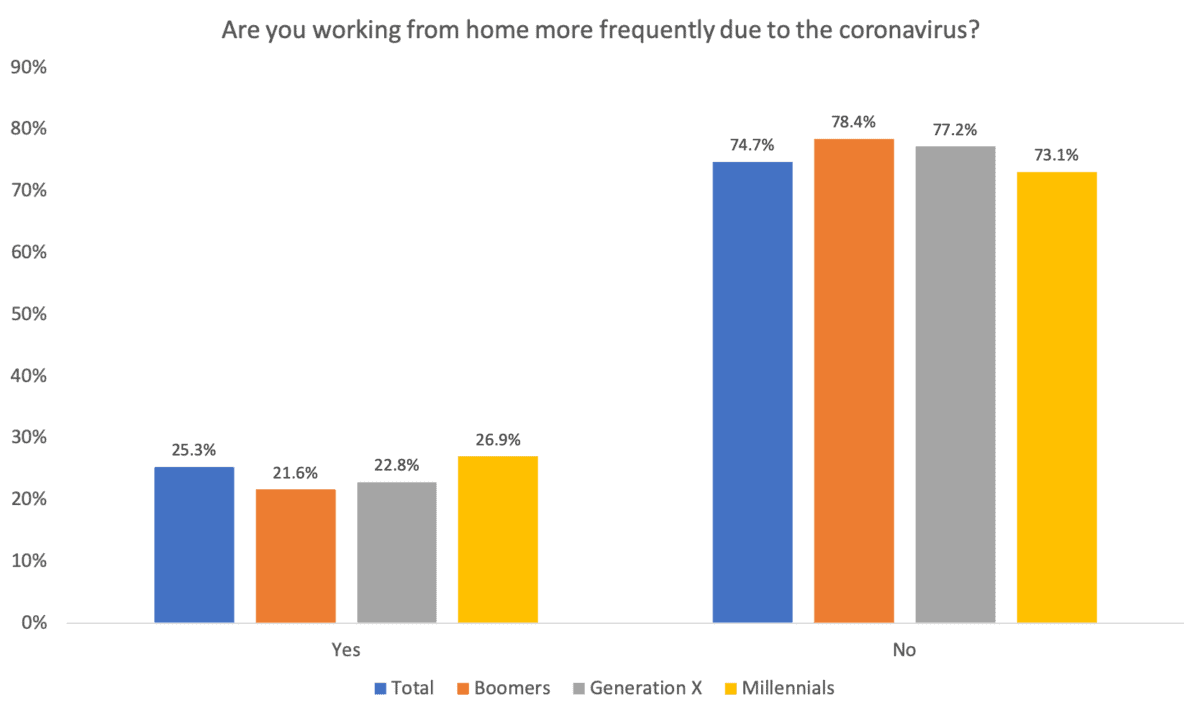A quarter of Americans are working from home more frequently due to the coronavirus, according to a survey conducted by Redfin.

The results differed significantly by city. In Seattle, which as of March 12, 2020 had the highest number of reported COVID-19 cases of any state, half of prospective homebuyers and sellers said they’re working remotely more often due to the outbreak—double the national figure. In second place was San Francisco (44.7%), followed by New York City (37.8%) and Philadelphia (33.3%). The cities where respondents were least likely to work remotely were Albuquerque, NM (8.3%), Atlanta (8.3%) and Dallas (10.0%).
The results also varied by industry. Participants who work in the technology sector were the most likely to be working from home more often due to the coronavirus (46.3%), followed by those who work in financial services (40.4%) and consulting (39.6%). Meanwhile, the occupations least likely to work remotely were travel (5.3%), parenting (9.4%) and retail (10.5%).

The higher a respondent’s annual household income, the more likely they were to say that they’re working from home more frequently due to COVID-19. Of participants who make at least $200,000 a year, 45.3% said their remote work has increased—nearly double the overall figure. Of respondents who make less than $100,000, only 13.3% said they’re working remotely more frequently.

The findings of the survey differed slightly when broken down by generation. Among baby-boomer respondents, 21.6% said they’re working remotely more often due to COVID-19, the lowest share of any group. Meanwhile, at 26.9%, millennials were the most likely to say they’re working from home more frequently.

Redfin conducted a survey in March 2020 of more than 1,000 customers who plan to buy and/or sell a home in the next 12 months. Respondents were asked about how COVID-19 is impacting their work habits, perspectives on the housing market, and home buying and selling plans. We asked participants to identify, from a list, which major city was closest to where they live, which is reflected in the data above.


